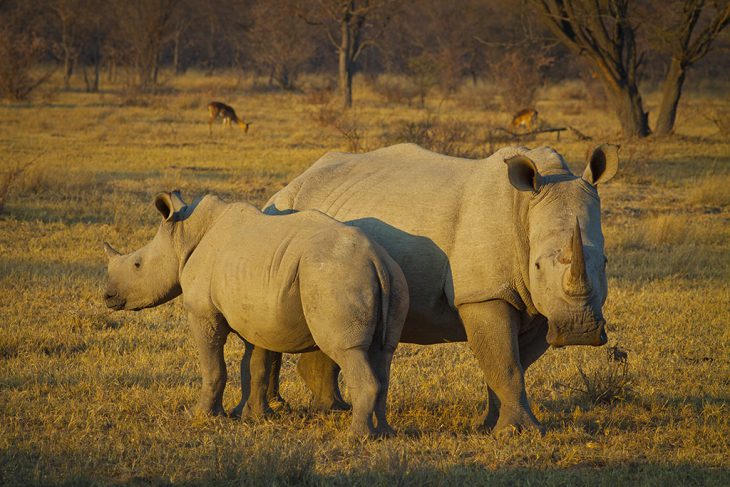It is too late for conservation efforts to save the northern white rhinoceros, but with recent scientific advancements there may still be hope to bring back this beloved species. In a recently published paper, scientist Marisa Korody and her colleagues at San Diego Zoo Global (USA) and at the Department of Molecular Medicine at Scripps Research (USA) describe their exciting progress on using stem cells to revive the northern white rhino.
The northern white rhino is functionally extinct, meaning there are not enough of these rhinos left to save the species. In fact there are only two northern white rhinos left: a mother and a daughter. But for decades, scientists have preserved cell samples from 15 northern white rhinos containing enough genetic material to potentially bring this species back from the brink. These preserved samples hold fibroblast cells — the type of skin cells that secrete collagen — from white rhinos. With these scientists’ newly developed methods, fibroblast cells can be converted into something much more valuable: induced pluripotent stem cells. These stem cells can differentiate into any cell type in the body including heart cells, muscle cells, and reproductive cells.
In theory, by converting fibroblast cells into reproductive cells, scientists could create genetically unique rhino embryos. Alongside other assisted reproduction technologies, scientists could implant a new embryo into a closely-related southern white rhino, where the baby northern white rhino could develop as an otherwise normal pregnancy. By completing this process multiple times, scientists may be able to establish a stable population of northern white rhinos.
In 2011, this research team generated induced pluripotent stem cells from the samples of another endangered species, but unfortunately since this process was found to harm the recipient genomes, this method was largely unsuccessful. Despite this setback, in 2015 the authors met with colleagues worldwide to consider ways to save the northern white rhino, and they concluded that methods involving induced pluripotent stem cells may still be the most promising solution. Over the following years, the scientists worked to improve their methods, and these improvements are documented in their recent paper. These experiments represent the first step in a long-term plan to bring the northern white rhino back through assisted reproduction techniques.
Right from the start, the scientists faced a whole host of challenges. Through trial and error they modified the growth medium for the cells, optimizing it for rhinoceros cells. With their improved growth medium, scientists successfully generated induced pluripotent stem cell lines from 11 rhinoceros individuals. This has never been done before and represents a huge stride forward in the path to recovering this species.
Before trying to make their first rhino, the scientists needed to stress these induced pluripotent stem cells and sequence their genomes to determine if the cell quality is good enough to potentially produce new, viable rhinos. They maintained colonies of these cells in long-term cultures and exposed these colonies to different conditions to give insight into how resilient these cells could be. These tests demonstrated that long-term culture did not affect the potential for these cells to differentiate into cardiac lineage cells, confirming that these cells are stable long-term. The researchers also confirmed that these pluripotent cells could potentially produce gametes, the egg and sperm cells that are used for sexual reproduction. These advancements indicate that with these newly developed protocols, induced pluripotent stem cells are a promising tool that could someday help recover the northern white rhino.
Although this study includes some exciting results, there is still much work to do. For example, scientists must now sequence the genomes of the northern and southern white rhino so other researchers can analyze the stem cells’ ability to stay the same over time. Despite the work that still needs to be done, these promising advancements could someday help the northern white rhino population recover. This method may also work for saving other endangered or extinct species, as long as the genetic material needed is available. Long-term, these scientists plan to continue a series of experiments that could ultimately bring this beloved rhino, and potentially other endangered species, back from the brink of extinction.


